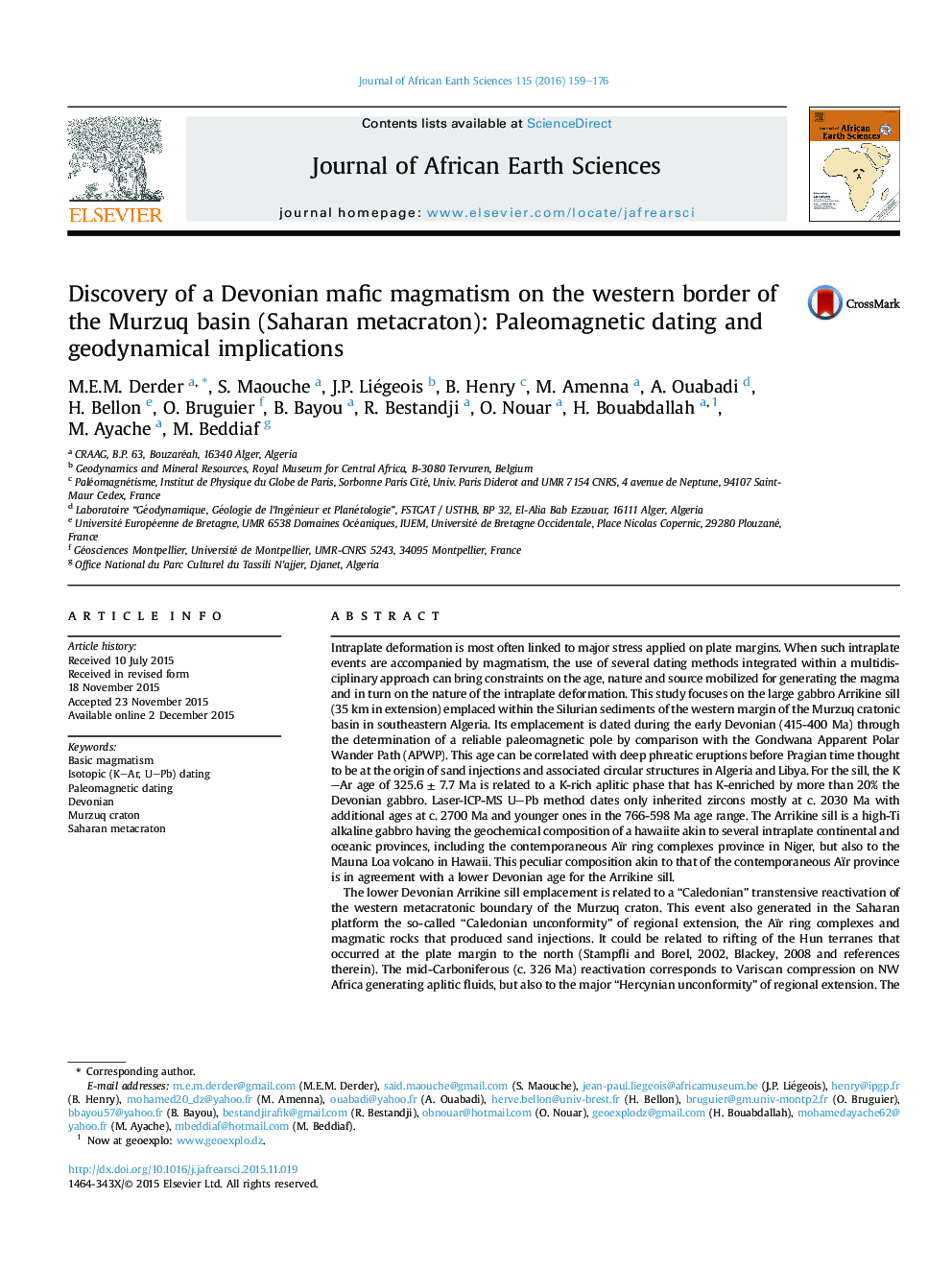| Article ID | Journal | Published Year | Pages | File Type |
|---|---|---|---|---|
| 4728407 | Journal of African Earth Sciences | 2016 | 18 Pages |
•A large mafic sill has been discovered in western border of the Murzuq basin.•Emplacement age around 410Ma has been obtained by paleomagnetic dating.•Emplacement is related to reactivation of mega-shear zones at cratons boundaries.•Obtained K/Ar age is that of a rejuvenation attributed to aplitic fluid percolation.•These ages correspond to that of the Caledonian and Hercynian unconformities.
Intraplate deformation is most often linked to major stress applied on plate margins. When such intraplate events are accompanied by magmatism, the use of several dating methods integrated within a multidisciplinary approach can bring constraints on the age, nature and source mobilized for generating the magma and in turn on the nature of the intraplate deformation. This study focuses on the large gabbro Arrikine sill (35 km in extension) emplaced within the Silurian sediments of the western margin of the Murzuq cratonic basin in southeastern Algeria. Its emplacement is dated during the early Devonian (415-400 Ma) through the determination of a reliable paleomagnetic pole by comparison with the Gondwana Apparent Polar Wander Path (APWP). This age can be correlated with deep phreatic eruptions before Pragian time thought to be at the origin of sand injections and associated circular structures in Algeria and Libya. For the sill, the K–Ar age of 325.6 ± 7.7 Ma is related to a K-rich aplitic phase that has K-enriched by more than 20% the Devonian gabbro. Laser-ICP-MS U–Pb method dates only inherited zircons mostly at c. 2030 Ma with additional ages at c. 2700 Ma and younger ones in the 766-598 Ma age range. The Arrikine sill is a high-Ti alkaline gabbro having the geochemical composition of a hawaiite akin to several intraplate continental and oceanic provinces, including the contemporaneous Aïr ring complexes province in Niger, but also to the Mauna Loa volcano in Hawaii. This peculiar composition akin to that of the contemporaneous Aïr province is in agreement with a lower Devonian age for the Arrikine sill.The lower Devonian Arrikine sill emplacement is related to a “Caledonian” transtensive reactivation of the western metacratonic boundary of the Murzuq craton. This event also generated in the Saharan platform the so-called “Caledonian unconformity” of regional extension, the Aïr ring complexes and magmatic rocks that produced sand injections. It could be related to rifting of the Hun terranes that occurred at the plate margin to the north (Stampfli and Borel, 2002, Blackey, 2008 and references therein). The mid-Carboniferous (c. 326 Ma) reactivation corresponds to Variscan compression on NW Africa generating aplitic fluids, but also to the major “Hercynian unconformity” of regional extension. The generation of the Arrikine magma is attributed to partial melting through adiabatic pressure release of uprising asthenosphere along tectonically reactivated mega-shear zones, here bordering the relictual Murzuq craton enclosed in the Saharan metacraton.
Graphical abstractFigure optionsDownload full-size imageDownload as PowerPoint slide
